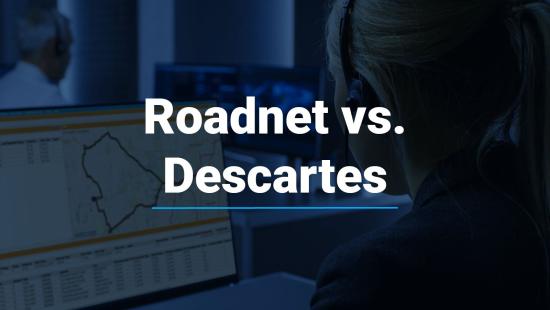6 Ways Machine Learning Can Improve Fleet Performance
Machine learning (ML) has become a pervasive topic in supply chain technology circles. Machine learning can help fleet operators maximize the fleet performance improving the accuracy of data used to plan and execute deliveries.
Machine learning algorithms are mathematical models based on sample data in order to make predictions or decisions without being explicitly programmed to do so. The information generated by GPS-tracked fleets is an excellent data source for machine learning to improve delivery performance.
6 Ways Machine Learning Helps Fleets
1. Delivery location
A significant challenge for companies delivering to construction sites is determining the delivery location at green field construction sites. There may or may not be a road system in place, the address doesn’t correctly reflect the actual delivery point and companies may not have the digital map data in their databases because the location is so new.
Machine learning can use the actual delivery location data to refine the address or geocoordinates used by the route planning system. The result is more accurate and feasible routes, more accurate planned delivery times and less confusion for the driver as they know exactly where to make the delivery.
2. Service times
Services times can vary based upon a number of factors such as resources involved, vehicle type, products being delivered, preparation work, etc. Many route planning systems have the ability to model service time based on the factors above using concepts like ‘engineered standards’.
While these can be highly developed models, they’re still representations of the real world and may not consider all of the factors that drive service times. Machine learning can take actual service time data to determine the most representative service time.
The result is more accurate service times. This improves delivery reliability and potentially improves delivery productivity, as any contingency time that was originally built into the stop could be reduced, allowing for more stops on the route.
3. Stop times
Stop times can vary based upon the customer location, parking restrictions, and other physical considerations (including vehicle type and driver skills). Again, many route planning systems have the ability to model stop times in detail, but they are still representations or all of the information about an individual stop is not available to be considered in the calculation.
Machine learning can take the stop time data to determine the most representative stop time. The result is more accurate stop times. Again, this enhances delivery reliability and potentially enhances delivery productivity, as any contingency time originally built into the stop could be reduced, allowing for a greater number of stops on the route.
4. Travel times
Travel times can vary based upon vehicle type, road class and network, time of day, weather and other factors. Most of these can modeled, particularly in the case of road data, in very detailed fashion.
However, local conditions mean road speeds can vary greatly. Machine learning can use delivery data to determine if modeled road speeds are slower or faster than what is actually experienced.
This information can be used in route planning to create more accurate and reliable routes.
5. Individual driver performance
Driver performance varies for a wide range of reasons from experience to driving speed to individual attitude. Understanding driver performance allows for a better definition of what constitutes ‘good’ performance as well as correctly incorporating it into route planning and execution processes.
Machine learning can evaluate driver performance to determine a performance factor for each driver to help maximize delivery productivity and correctly reflect driver capability.
6. Estimated-time-of-arrival (ETA)
Providing accurate ETAs is an important part of the customer experience and helps contractors be more productive with their crews. ETAs can be dynamically calculated using a number of factors, including road network speeds and restrictions, vehicle types, predictive road speeds, and traditionally calculated stop, service and travel times as well as current status in route.
Considering all of the ways machine learning can better calculate the times and driver performance mentioned above, ETAs can be much more accurate, providing customers with a better delivery experience and allowing contractors to detect delivery problems before they occur.
Conclusion
The extent that machine learning can help companies improve fleet operations is considerable and tangible—from more accurate delivery plans and customer ETAs to greater productivity. Probably the best news for fleet operators is that these benefits are within reach today as machine learning is already being incorporated into modern route planning and dispatch systems.
Discover how machine learning, alongside modern route planning and dispatch systems, can transform your business.
Download the Article
6 Ways Machine Learning Can Enhance Fleet Performance
Fleet Resource Center
Discover Tutorials, Success Stories, Thought Leadership, and More to
Deepen Your Routing, Mobile, and Telematics Expertise.
Recommended For You




